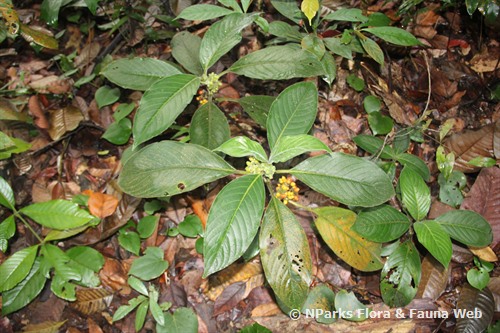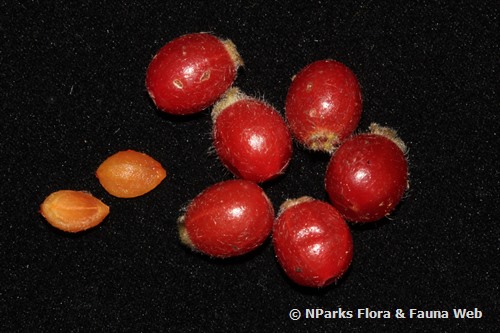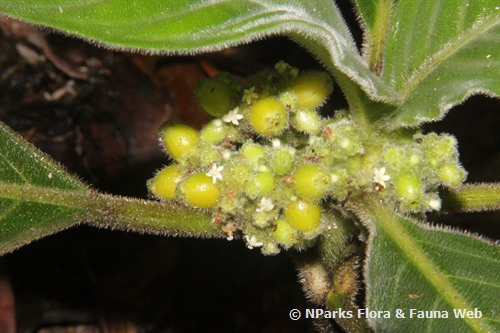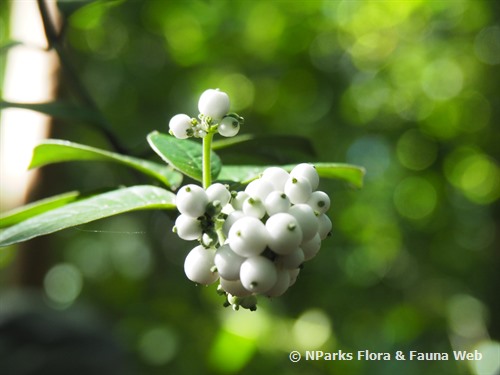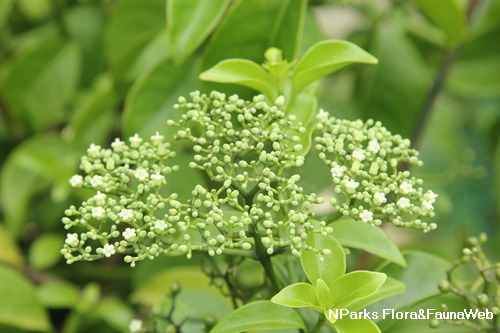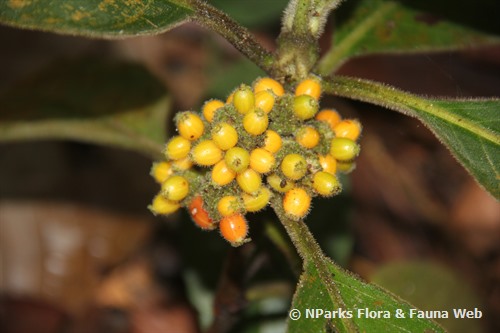
Name
Classifications and Characteristics
| Plant Division | Angiosperms (Flowering Seed Plants) |
|---|---|
| Plant Growth Form | Shrub |
Biogeography
| Native Distribution | Peninsular Malaysia and Singapore |
|---|---|
| Native Habitat | Terrestrial |
| Preferred Climate Zone | Tropical |
| Local Conservation Status | Native to Singapore (Critically Endangered (CR)) |
Description and Ethnobotany
| Growth Form | It is a densely hairy shrub up to 1 m tall. |
|---|---|
| Foliage | Its opposite, stalked leaves have membranous leaf blades that are usually elliptic to lance-shaped with a pointed tip, 18–23 by 10–11 cm, hairy, and have 10 pairs of veins that are prominent below. |
| Flowers | The plant produces bisexual flowers. Its hairy flowers are white, small, and arranged in clusters. |
| Fruit | Its fruit is oblong, bright orange, 7.6 mm long, and hairy. Its seed is 4-ridged. |
| Habitat | It grows in inland forests. It occurs locally in the vicinity of Upper Peirce Reservoir, Nee Soon Swamp Forest, and Bukit Timah Nature Reserve. |
| Cultivation | It can be propagated by seed. |
| Etymology | Greek psychotria, refreshment, for the alleged medicinal properties of some plants in this genus; Latin helferiana, commemorating J. F. Helfer, a doctor and plant collector |
Landscaping Features
| Landscape Uses | Parks & Gardens |
|---|
Plant Care and Propagation
| Light Preference | Semi-Shade |
|---|---|
| Water Preference | Moderate Water |
Foliar
| Mature Foliage Colour(s) | Green |
|---|
Floral (Angiosperm)
| Flower Colour(s) | Cream / Off-White |
|---|
Fruit, Seed and Spore
| Mature Fruit Colour(s) | Orange |
|---|
Image Repository
Others
| Master ID | 32691 |
|---|---|
| Species ID | 7103 |
| Flora Disclaimer | The information in this website has been compiled from reliable sources, such as reference works on medicinal plants. It is not a substitute for medical advice or treatment and NParks does not purport to provide any medical advice. Readers should always consult his/her physician before using or consuming a plant for medicinal purposes. |

